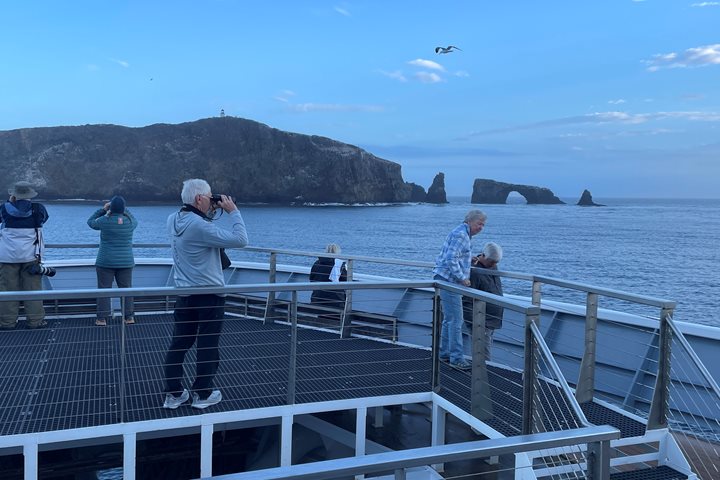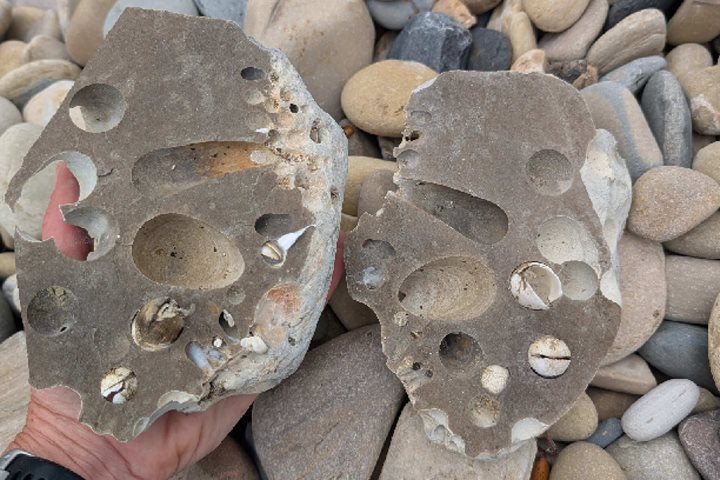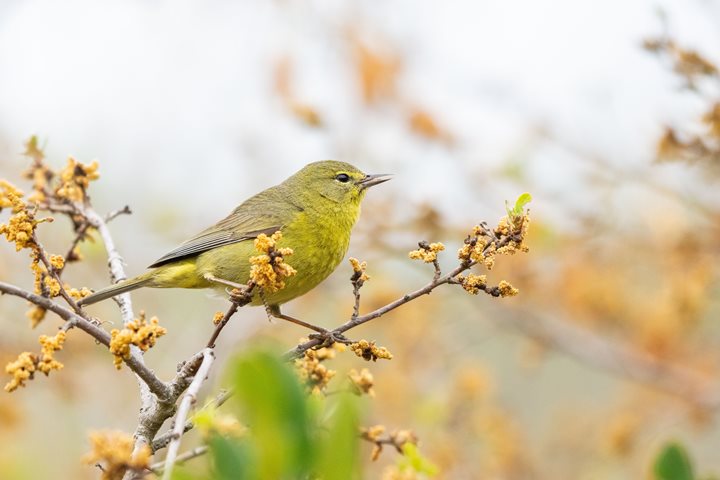Sailing out of the Port of Los Angeles into the sunset on Saturday evening with hundreds of common dolphins pausing in their feeding frenzy to play at our bow, we settled into the evening anticipating continued excitement in the days ahead.
All aboard National Geographic Sea Lion woke to calm seas and the steady beam of a light station marking the rugged piecewise island in the distance that would be our first destination.
Arriving at Anacapa Island, we were greeted by even more common dolphins who were joined by brown pelicans diving into the waters, likely after the same food that is abundant in the productive waters of the Santa Barbara Channel. At just over one square mile in area Anacapa is the second smallest of the Channel Islands that lie off the coast of California and yet in just a short walk along the dramatic coastline, it tells visitors a remarkable story. Just over 20 miles from the mainland, as we stepped foot on the isolated landscape, we quickly felt worlds away.
Despite its small size, the island has a surprisingly high number of plants and animals found nowhere else in the world. A brief chat with the national park ranger stationed on the island highlighted some of the challenges of making a living, such as limited water and exposure, that have not only shaped the plants and animals endemic to the island but still persist for life here today.
We left with stunning views of the surrounding seas and of the islands that lie Westward we have yet to explore. It was a fantastic introduction to the remarkable story of isolation, disturbance and recovery that make these islands “treasures in the sea.”
From Anacapa, we sailed west toward Santa Cruz Island and chose to navigate along the northern coast to find an anchorage that would allow small boat and kayak operations. It didn’t take long before we were craning our necks to gaze in awe at juxtaposed igneous and sedimentary rock formations that were a testament to the complex geologic history of these islands. In turn, everyone was temporarily drawn away from the cliffs out into the channel toward yet another common dolphin feeding frenzy! Surrounded by splashing and surprise up-close encounters with these energetic and curious mammals, we couldn’t help but laugh and smile with delight.
Once the dolphins settled and the light began to fade, we returned to the rocky outcrops to enjoy one last glimpse of the remote coastline, reflecting on an incredible start to our journey and looking forward to the days ahead.









